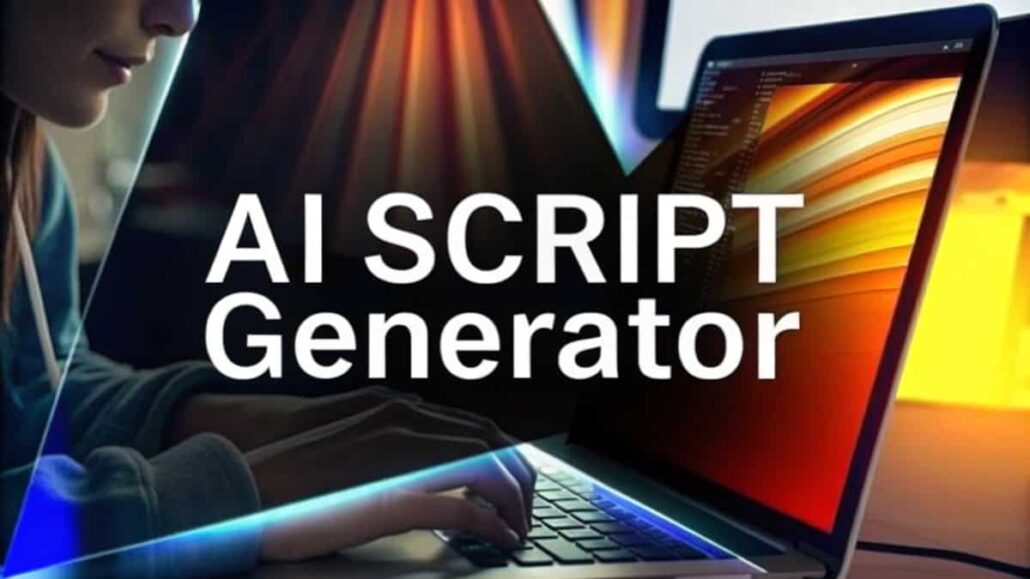
Artificial intelligence keeps whispering new ideas into the ears of creators everywhere, and voice generation is one of its most exciting gifts. Today, a good AI voice can chat, narrate, or sing so realistically that many listeners dont even realize theyre hearing a machine. That smooth, human-like sound is opening fresh doors for podcasters, marketers, game developers, and pretty much anyone who works with sound.
In this guide, well walk you through the basics of AI voice tools: how they work, what features matter, and how to pick the right one for your project. Whether you need warm narration for a video, a friendly chatbot voice, or fast audio for an app, youll see how these generators can save time, cut costs, and give your work extra polish.
What Are AI Voice Generators?
AI voice generators are smart pieces of software that turn written text into spoken speech using deep-learning tricks. They take a sentence from your script, break it down into tiny sound bits, and glue those bits back together so the words flow naturally. Where older text-to-speech systems sounded flat and robotic, todays tools can add warmth, pause for breath, even toss in a smile or frown, depending on what the script calls for.
AI voice generation listens closely to tons of recorded speech so that it can learn the tiny patterns behind every sound. By soaking up this audio, it builds a neural model that knows not just what words mean but also how to stretch, soften, or punch them out when talking.
How AI Voice Generation Works
The basic trick is a network of algorithms trained with hours and hours of sound. Experts break the work into four steps:
Text Analysis. First, the system scans the written words, spots commas, quotes, and other marks, then figures out the mood and rhythm the sentence needs.
Phonetic Conversion. Next, it turns the text into phonemes-those tiny sound parts that mix together to form speech-making sure each word is pronounced correctly.
Prosody Generation. At this stage, the AI adds emphasis, pauses, and slides up or down in pitch so the voice sounds more human.
Audio Synthesis. Finally, all that data gets boiled down into a wave form, the waveform you hear coming out of speakers or headphones.
Types of AI Voice Generators
Today, several flavors of AI voice tools exist, from rule-based systems to newer deep-learning models, and each shines in different jobs.
Cloud-Based Solutions
Cloud-based AI voice generators turn text into speech on powerful remote servers. Since these systems tap into up-to-date hardware and models, they usually deliver the clearest voices and the widest range of options.
Big tech companies that spend heavily on speech research provide the most popular cloud services. Many of them also offer easy API access, so developers can plug voice tech into their apps without starting from scratch.
Desktop Applications
Desktop AI voice generators install directly on your PC, which means you keep all data on your machine and can work offline. They might not reach the same quality as a cloud-based service, but they let you decide how, when, and where text gets voiced.
Such apps shine for anyone handling private material or for people who travel but still need voice generation without hunting for Wi-Fi.
Browser- Based Tools
Browser-based AI voice generators run in a web page, so you get speech output in seconds without downloading anything. They usually sit between cloud and desktop options in quality and features, making them great for fast jobs or light users.
Key Features to Look For
When you compare voice generator tools, a few key features can really change how smooth the process feels and how good the final audio sounds.
Voice Quality and Naturalness
The first thing anyone notices in an AI voice is how real it sounds. When choosing a tool, make sure it gives you:
Speech that is easy to understand and clearly pronounce
- A pace that flows like natural conversation
- Vocal moods that match the script, whether happy, calm, or urgent
- Few echoes, glitches, or tinny tones that shout robot
- Voice Variety and Customization
One project might need a cheery kid, while another calls for a soothing grandparent. Top generators let you pick:
Speed and pitch sliders so each line feels just right
Labels for angry, excited, or nervous tones you can adjust
Full support for multiple languages and local dialects
Format and Integration Options
Think about where the audio will go once you create it:
Exports in handy formats like MP3 and WAV
An API for apps or sites that needs voices on demand
Plug-ins for video editors, e-learning tools, and podcast suites
Batch export to turn whole scripts into audio in one click
Advanced Controls
Professionals want more than presets; they want to shape each phrase. Look for:
Support for SSML tags that say when to pause or speed up
Custom word lists to fix tricky names or slang
Controls for loudness, breath, and stress on key words
A basic audio editor to trim, fade, or add background music
Popular AI Voice Generator Platforms
Hundreds of services promise great voices, so picking the right one matters.
Enterprise-Grade Solutions
For teams that need scale, the biggest platforms deliver rich libraries, flexible APIs, and business-support hours.
Content Creator Tools
Creative platforms built for content makers put simplicity first. Most come with readymade templates, music tracks, and step-by-step setups for podcasts, video voiceovers, or quick social media posts.
Accessibility-Focused Options
A few voice generators center on accessibility, making life easier for people with vision loss or reading challenges. These helpers usually work well with screen readers and offer custom text layouts.
Applications and Use Cases
Overall, AI voice generators fit countless tasks, from studio work to classroom lessons or personal projects.
How People Use AI Voice Tools
Content creators now lean on AI voices to:
- whip up podcast episodes and audiobooks
- record voiceovers for videos and slides
- add narration to online courses
- make quick audio clips for social feeds.
Business Applications
Companies weave voice tech into daily tasks to:
- handle basic customer service chats
- build training guides and team memos
- power voice-driven apps and dashboards
- spin up multilingual content in minutes.
Education and Accessibility
Schools and accessibility groups rely on AI voices to:
- turn textbooks into audio files
- offer pronunciation tools for new languages
- help students who struggle with reading
- read back answers in learning apps.
Entertainment and Media
Film and gaming pros tap voice generation for:
- giving life to video-game characters
- filling lines in animation and movies
- crafting interactive shows and websites
- quick demos when casting a new role.
Getting Started with AI Voice Generators
To dive in, first pinpoint what you want, then pick a tool that fits.
Defining Your Requirements
Before picking an AI voice tool, ask yourself a few questions:
- What kind of content will you produce-podcasts, tutorials, or video narrations?
- Who will listen and what tone do they expect-warm, professional, or playful?
- Does the tool need to plug into your website, app, or editing software?
- How much can you spend now, and how often will you generate new audio clips?
Testing and Evaluation
Almost every platform offers a free trial or a no-cost tier. Take advantage of these to:
- Listen to several samples made from your scripts, not demo text.
- Create a short project and see how well the tool fits your daily routine.
- Reach out to support with a simple question and check response times.
- Jot down what features you get at each pricing level and where hidden fees lurk.
Best Practices for Implementation
Once you choose a voice generator, follow these tips for smoother results:
- Rewrite scripts as if they will be read out loud-say it, then type it.
- Use commas, caps, and line breaks to tell the engine where to breathe.
- Swap voice styles, speeds, and moods until one feels just right.
- Set a calendar reminder to review old scripts and tweak the workflow.
The Future of AI Voice Generation
Engineers are adding accents, emotions, and real-time translation, so stay curious.
Emerging Technologies
Talk about a cool moment in tech! Fresh breakthroughs in machine learning and neural nets keep pushing the limits of AI voice work.
- Real-time voice cloning and customization: Voice cloning can now happen almost as fast as people talk, letting users tweak tone, speed, or style in live chats.
- Improved emotional expression and context awareness: AIs read the mood of a script and adjust pitch or pause so lines sound more human.
- Enhanced multilingual capabilities: One model can now switch between dozens of languages, folding in local accents for a natural feel.
- Integration with other AI technologies: Voice tools blend easily with vision, NLP, and robotics, opening fresh uses in gaming, tutoring, and beyond.
Ethical Considerations
Still, the techs power raises big ethical headaches we cant ignore. Phones and recording studios arent the only ones affected.
- Consent and rights regarding voice replication: Whose voice gets copied? Clear consent rules are still patchy.
- Potential for misuse in deepfakes and fraud: Crooks could fake a CEOs voice to steal money or secrets, so security checks matter.
- Impact on voice actors and traditional recording industries: Gigs for pros may shrink, though new roles in supervision or fine-tuning could pop up.
- Privacy concerns with voice data collection: Any audio sample kept in the cloud can become a leak, so firms need strict data shields.
Making the Right Choice for Your Needs
Choosing a voice generator boils down to your goals, features you want, and how much you can spend.
Start with an all-rounder product that sounds decent and costs fair, then learn the ropes. After a few projects youll spot gaps and can think about niche apps or pricier plans that plug them.
Remember to test several services, listen to user feedback, and tweak settings until the output feels right. Because the field grows fast, keeping an eye on blogs and review sites will make sure your setup stays sharp.
The top AI voice generator is really the one that sits comfortably in your day-to-day work and sounds exactly the way you need it to. Use that yardstick to compare options, check reviews, and feel free to drop a quick email to customer support if a feature or technical detail isn’t clear.







